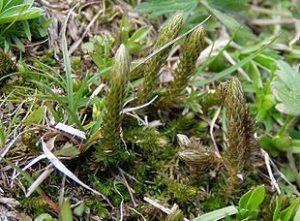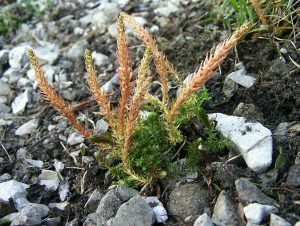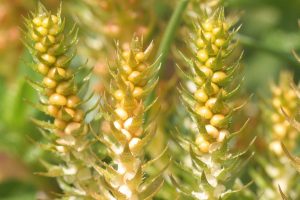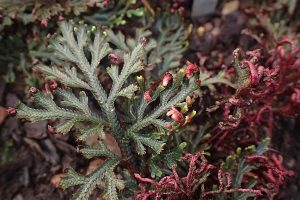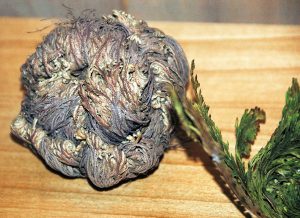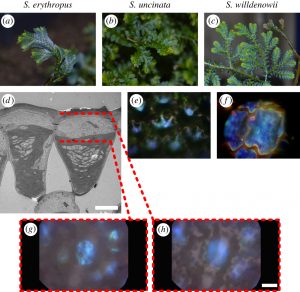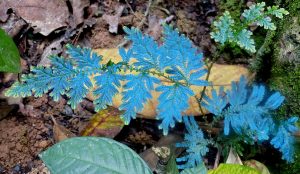By Hans Olav Nymand
Denmark is a little land in Scandinavia, Northern Europe, but unlike the other Scandinavian countries, we have neither mountains (highest point 172m) nor vast boreal forests, and despite the relatively northern latitude, the Gulf Stream assures a cool temperate coastal climate with mild winters and cool summers.

These geographic and climatic facts and a historical preference for intensive heavily mechanized agriculture, means that there are very few spots in Denmark with nutrient poor, undisturbed soils.
One consequence of this is that only one species of Selaginella can be found in the wild, S. selaginoides, the lesser clubmoss, and it is extremely rare, only small stands found only in a few protected areas.
Now there are more than 700 species of Selaginella, where many are popular with terrarium enthusiasts, so you might think that some species would be available as houseplants – but mostly, they are not. You can, occasionally, get various species from terrarium shops or specialist import nurseries, but only three species could be described in any sense as common.
By far the most common is the S. lepidophylla, marketed as “Rose of Jericho” or “Resurrection plant”. These are available year round, although more commonly from October to April. They are sold dried out (of course) but correctly labelled as Selaginella and usually comes with a little explanation of what they are and how to treat them.
Somewhat more uncommon is S. apoda which is also sold year round, but rarely labelled correctly and the name is generally unknown – even by the nursery staff. Even when in store, you can’t walk into a nursery and ask for Selaginella. Around Christmas they are often sold decorated with orange plastic “berries” – rather weird.
In Christmas (from November to February) a third species becomes readily available, S. martensii, often sold in a variegated form.
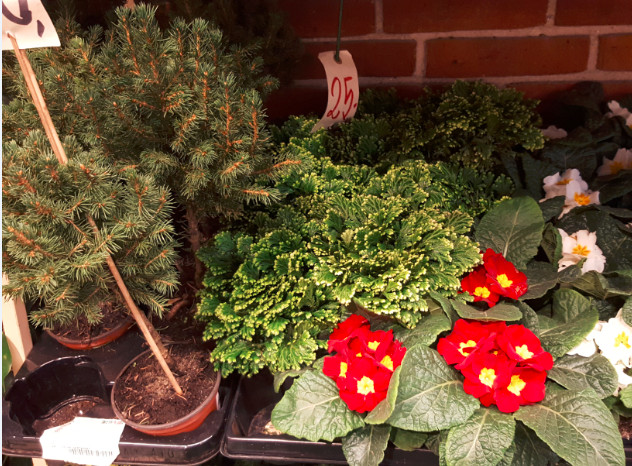
Here it is in my local supermarket, very “non specialist”, where I found it besides primroses and dwarf spruce, but they are also readily available in nurseries. They are unfortunately not easy to grow in a typical Danish living room, as these have a quite dry “climate” – maybe this is the explanation why I have never actually seen them as a permanent house plant. S. apoda and S. martensii are usually sold in small pots, and are quite cheap, although larger specimens are sometimes available. None of these seems to be produced in Danish production nurseries, they are all imported from The Netherlands.
I’ve been asking around why people buy this plant, and most “common” buyers say they don’t know the plant already, and just buy it either because it looks different and/or because it is “christmaslike”.
Editor’s note (Alastair Culham)
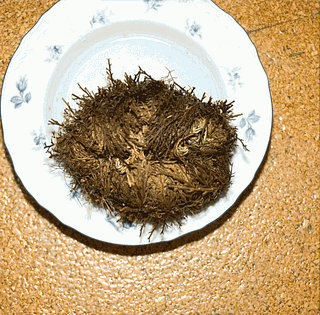
Selaginella plants come in colours other than green as well. One of my favourites to grow in a terrarium is the red spikemoss, Selaginella erythropus which has strikingly deep red undersides to the leaves due to intense anthocyanin pigments. In contrast is the rather ethereal irridescent blue Selaginellas that have structural interference colour and seem to glow in low light conditions. For the heavy duty botanists among you there is an excellent paper of this blue irridescence (Masters et al. 2018). For a botanical miracle you might grow Selaginella lepidophylla, one of the resurrection plants that transforms from a resting bown and dead ball in to an amazing bright green rosette when water is added.
Reference
Masters Nathan J., Lopez-Garcia Martin, Oulton Ruth and Whitney Heather M. (2018) Characterization of chloroplast iridescence in Selaginella erythropus. J. R. Soc. Interface.1520180559
http://doi.org/10.1098/rsif.2018.0559
For more #AdventBotany see our 2020 index page.

